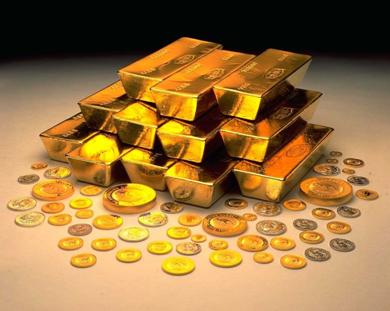The impact of demonetisation has played out in many ways. Here is one more way: The gold imports between April and July 2017 have been nearly 2.7 times the gold imports during the same period last year.
Let’s take a look at Figure 1 which plots gold imports (in Kgs) over the last few financial years.
Figure 1:
It is clear from Figure 1 that the gold imports have jumped up big time between April to July 2017, in comparison to last year. In fact, they are the second highest in the last five years. Take a look at Figure 2. Figure 2 plots the money spent on importing gold over the last five years.
Figure 2:
Even in value terms significantly more gold has been imported this year than last year. The price of gold during the period April to July 2017, averaged at $1257.9 per ounce (one troy ounce equals 31.1 grams). During the same period last year, the price of gold had averaged at $1291.3 per ounce, which was slightly higher.
How do things look if we look at the calendar year instead of the financial year? Between January and July 2017, the total amount of gold imported stands at 6, 61,836 kgs. Between January and July 2016, this had stood at 3,11,938kgs. There is a clear jump in this case as well. In fact, the interesting thing is that the import of gold has been concentrated during the first five months of the calendar year, immediately after demonetisation.
What does this tell us? When and why do people actually buy gold?
The history of economics tells us that people buy gold when the faith in official paper money (in this case the Indian rupee) is low. Take the case of the period between April to July 2013. A lot of gold was bought during this period. The rate of consumer price inflation was at 9-10 per cent. Given this, a section of the population had lost faith in the Indian rupee and was hedging against inflation and buying gold.
What is happening this time around? This time around Indians are buying gold because in the aftermath of demonetisation which was carried out in November 2016, there is a feeling that the government might do it again. Given this, a portion of the black money which was held in the form of cash earlier, is now simply being converted into gold. This seems like the most logical explanation for this surge. The lower price argument doesn’t really hold because prices this year have been more or less similar to prices last year.
Of course, gold is easy to store and has never gone out of fashion. Hence, it can easily be converted into cash at any point of time.
In 2013-2014, people had lost confidence in paper money because of extremely high inflation. This time around, people have lost faith in paper money because of demonetisation. Hence, they are buying gold.
As Indians bought gold in 2013-2014 and a lot of it (close to 4,20,000 kgs, during the first four months of that financial year, as Figure 1 suggests), the demand for dollars went up. India imports almost all of the gold that it consumes. Hence, it buys gold internationally in dollars. As the demand for dollars went up, importers sold rupees and bought dollars. In the process, the rupee lost value rapidly against the dollar.
In April 2013, one dollar was worth Rs 54.23. By August 2013, it was worth Rs 67.4. The rupee simply crashed during the period. It is worth asking here that why a similar situation does not prevail right now. Why hasn’t the rupee crashed like it did when people bought lots of gold between April and July 2013?
This is because while Indians are buying gold, a lot of dollars continue to come to India through the foreign institutional investors route. These investors continue to invest in the Indian stock market and the debt market. Between April and July 2017, the foreign institutional investors have invested a little over Rs 95,000 crore in the stock and the debt market. The foreign institutional investors sell dollars and buy rupees in order to invest in the stock and the debt market. This demand for the Indian rupee has ensured that the dollar has remained stable against the rupee at around Rs 64. Hence, the demand for rupees among these investors is negating the demand for dollars among gold importers. This has led to a stable value of the rupee against the dollar.
What had happened between April and July 2013? While, the demand for gold was very high, the foreign institutional investors were selling out of India. During the period, they encashed close to Rs 27,000 crore from the stock and the debt market. In fact, the foreign institutional investors sold stocks and debt worth over Rs 60,000 crore between June and July 2013.
In order to repatriate this money abroad, they had to sell these rupees and buy dollars. This along with heavy gold buying, which was accompanied by selling of rupees and buying of dollars, pushed up the demand for the dollar, and drove down the value of the rupee.
This essentially explains why the value of the rupee had crashed in 2013-2014, and has remained stable during this financial year. Nevertheless, people are buying gold because their faith in the Indian rupee has gone down and they clearly want to hedge against the risk of another round of demonetisation.
(The column was originally published on Equitymaster on September 19, 2017).

 Gold is money.
Gold is money.